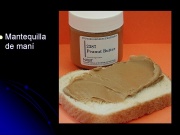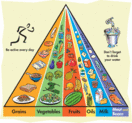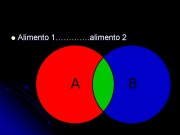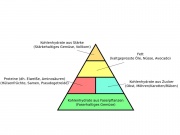Niebla el gusanito
Contenido
- 1 Niebla el gusanito
- 1.1 worthiness
- 1.2 contenidos de la biologia
- 1.3 Materiales
- 1.4 Volantes
- 1.5 Descripción de la actividad
- 1.6 Lesson plan
- 1.7 Problemas potenciales
- 1.8 enlace con la Matemática
- 1.9 Y con Literatura
- 1.10 Connexiones con los estandares educacionales
- 1.11 Next steps
- 1.12 Citas y links
- 1.13 Reflexiones
- 1.14 fast track (si la quieres cortita)
Niebla el gusanito
worthiness
Probado y verificado Trusted
contenidos de la biologia
- Nutrición
- Piramide de los alimentos
- Herbivoría
- Ciclo de vida de los insectos
Materiales
Teacher: Caterpillar - de papel crepe (puede agregar, EX: ojos, antenas). Necesita bolsas plásticas for holding the cut out pieces of food. Una piramide actualizada. Pedazos grandes de papel Large piece of easel paper with a pyramid drawn on it split into 6 sections.
Studentes: Magazines, tijeras, cinta.
Volantes
Piramide de alimentos - Halle una versión apropiada y actualizada y dibujela en papel kraft
a la diestra Niebla, vemos una imagen de la oruga que tu puedes hacer.
Descripción de la actividad
El propósito de esta actividad es dar vida a la pirámide alimenticia. Cuelga la oruga en un lugar visible para todos los estudiantes y reparte la mano. Divide la clase en seis grupos y asigna a cada grupo una categoría de alimentos. Pídanles que revisen las revistas y encuentren los alimentos que corresponden a su categoría asignada y recorten las imagenes. Después de unos 10 minutos, vuelva a reunir a la clase. Cada niño debe escoger una de las imágenes que elija para compartir con la clase. Rodee el círculo y dé a cada niño la oportunidad de explicar por qué recortaron la foto que eligieron y luego haga que la coloquen en la boca de las orugas.
Lesson plan
- Haga un gusanito en papel Kraft o de cualquier material que tengas. Asegurese que hagas la boca suficientemente grande para ubicar un bolsa ziplock a la espalda de tal modo que los estudiantes puedan poner alimentos en la boca de gusanito Niebla.
- Ya en la clase, comience una introducción simple sobre la piramide de alimentos. Asegurese que cubra los diferentes grupos de alimentos and what type of foods are in each.
- Luego, divida el grupo en seis y asigne un grupo de alimento a cada uno.
- Hand out magazines and scissors to each of the groups and ask them to flip through the magazines and ask each student to choose one food that they like from their assigned food group to feed to Caille the Caterpillar. buscar alimentos en las imagenes de las revistas para darselo a NIEBLA
- Once each student has cut out his or her food, regroup with the entire class and ask each student to share their food choice and why they have chosen it.
- Reparta revistas y tijeras a cada uno de los grupos y pídales que hojeen las revistas y que escojan un alimento que les guste de su grupo de alimentos asignado para alimentar a Niebla el gusanito.
- Then have the student tape their foods to the corresponding section on the easel food pyramid to make a poster for the classroom.
- Podría intentar que escuchen la versión en inglés The Very Hungry Caterpillar, de Eric Carle.[1]
Tips:
- Be sure to cut the hole in the mouth of the caterpillar large enough for your students hands to fit in and out. This avoids some hassle trying to pull their hand out.
- You could begin the lesson with the story so that the students can make the connection with Caillie or it may be nice to read the book after they are finished otherwise younger grades especially will be too distracted.
Problemas potenciales
Algunos problemas que pueden surgir incluyen la dificultad de los estudiantes para identificar entre grupos de alimentos
- that you may come across may include student difficulty distinguishing between food group categories and running out of magazines to cut up. A way that this can be solved, is asking the students why they think that the food they chose is part of a specific food group. Finding good examples of oils also may become problematic or hard to explain. Oils may be harder to find, but you can explain to students what kinds of food are make of certain oils.,':
explicar los aceites
enlace con la Matemática
Los alumnos pueden hacer diagramas de Venn para mostrar los alimentos y sus bondades, que alimentos son chatarra y al medio cuales son ambiguos. Les permitirá disitinguir que alimentos son buenos poara su salud. Y para explorar los grupos de alimentos. Alimentos cocidos ocuparán las intersecciones... This will be good for the students to know what kinds of foods are healthy for them. Venn diagrams can also be used to explore food groups. Cooked foods will often occupy the intersections depending on what food groups are in a particular list of ingredients.
Y con Literatura
Lea "The Very Hungry Caterpillar," de Eric Carle. This way the children can focus in on the food that is talked about in the book and figure out what food groups they belong in.
Another book that relates to healthy eating is Gregory, the "Terrible Eater," by Mitchell Sharmat.
Connexiones con los estandares educacionales
This lesson can be applied to the Healthy Choices Standard for K-4 grade, as well as a math connection. 3.5 Students make informed, healthy choices that positively affect the health, safety, and well-being of themselves and others. This is evident when students: Can identify and classify foods according to the Food Guide Pyramid.
Next steps
Once this activity has been completed then the class could move on to talk about serving and serving sizes. You could also talk about vitamins and minerals found in different foods and why they are important for our bodies. You could also do a lesson and activity incorporating the importance of exercise. ...Y ahora a los platos (..y las raciones) ...y entonces que tiene
- vitaminas
- minerales
- y el ejercicio (pa' quemar calorías)
Citas y links
Carle, Eric. The Very Hungry Caterpillar. (1994).
Reflexiones
|
When we tested this lesson on our group of second graders we found that starting with the book was more effective. If we could add something to it though it would have been nice to have a butterfly also. That way, once we fed our Caille the caterpillar all of the healthy foods, we could transform her into a beautiful butterfly. We also learned very quickly not to give the students materials before they needed them. For instance, in one group we had already passed out all of the materials for the students to cut out their health foods and rather than listening to one of us read the book, one student decided to cut up her food pyramid hand out. So if you do decided to read the book first, it is important to take everything one small step at a time. Another important piece of this that we noticed was that many of the students had already heard the story The Very Hungry Caterpillar. Although the caterpillar is a central part of the lesson it may be beneficial to find other book about eating healthy and using the character from that book such as Gregory the Goat. This may be beneficial because while we were reading the story to the students many of them were distracted and their minds were definitely wondering where as if they are having a new storyline introduced to them they may have payed more attention to the story. Finally, we noticed that the section on the pyramid for oils was not only difficult to explain to the students, but very difficult to find in the magazines. One of the best examples we could find was vegetable oil or olive oil, but even those were a stretch to find because they were only in the list of ingredients, not an actual picture. |
Cuando probamos esta lección en nuestro grupo de alumnos de segundo grado encontramos que empezar con el libro era más efectivo. Si pudiéramos agregarle algo, aunque hubiera sido bueno tener una mariposa también. De esa manera, una vez que alimentamos a nuestra Niebla la oruga con todos los alimentos saludables, podríamos transformarla en una hermosa mariposa. También aprendimos rápidamente a no dar a los estudiantes materiales antes de que los necesitaran. Por ejemplo, en un grupo ya habíamos repartido todos los materiales para que los estudiantes recortaran sus alimentos saludables y en lugar de escuchar a uno de nosotros leer el libro, una estudiante decidió recortar su pirámide alimenticia. Así que si deciden leer el libro primero, es importante dar un pequeño paso a la vez. Otra parte importante de esto que notamos fue que muchos de los estudiantes ya habían escuchado la historia La oruga muy hambrienta. Aunque la oruga es una parte central de la lección, puede ser beneficioso encontrar otro libro sobre la alimentación saludable y el uso del personaje de ese libro, como Gregorio el chivo. Esto puede ser beneficioso porque mientras leíamos la historia a los estudiantes, muchos de ellos estaban distraídos y sus mentes se preguntaban dónde, como si les estuvieran presentando una nueva historia, podrían haber prestado más atención a la historia. Finalmente, nos dimos cuenta de que la sección sobre la pirámide de los aceites no sólo era difícil de explicar a los estudiantes, sino muy difícil de encontrar en las revistas. Uno de los mejores ejemplos que pudimos encontrar fue el aceite vegetal o el aceite de oliva, pero incluso esos eran un tramo a encontrar porque sólo estaban en la lista de ingredientes, no una imagen real |
fast track (si la quieres cortita)
Notas destacadas para esta lección:
- La boca de Niebla debe ser de un tamaño para que quepa en tu mano.
- Presentar la lectura primero es mejor para los alumnos y mientras cortan hacen los enlaces con los alimentos lecciones.
- Allot disponga de una media hora para esta lección.
- haga el grupo de las grasas más grande lo que puede ser de beneficio ya que es el grupo de alimentos más potentes.
- se puede adaptar de tal modo que cada estudiante tenga su propia pirámide o una enorme para el salón.





